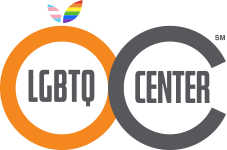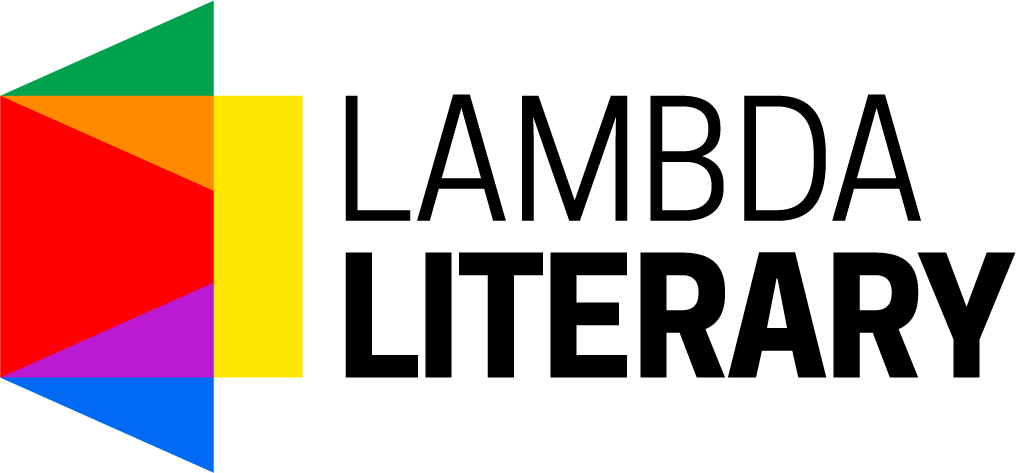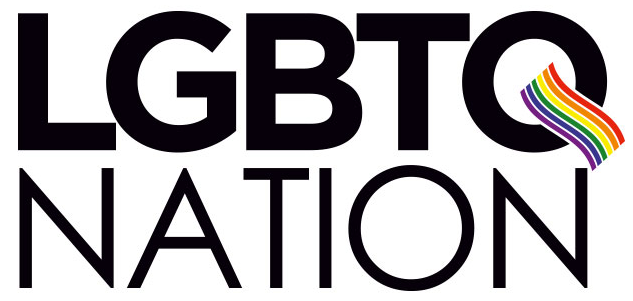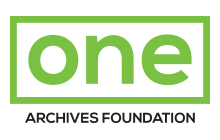The LGBTQ+ Library Resource Guide was designed to provide valuable resources to those interested in learning (and thinking critically) about the experiences of LGBTQ+ groups. It is meant to provide resources and demonstrate the influence LGBTQ+ persons have brought to literature, academia, media and culture. This guide is also meant to empower our LGBTQ+ community with affirmation of various identities and contributions to society. These resources can help to initiate necessary discussions regarding sexual identity, American cultural norms, gender identity, xenophobia, injustice, discrimination, legal rights and transformational change. The resource guide is not meant to be comprehensive, but through our academic and student community, it can be a living repository of material.








Some of the included terms might help – but be aware that many have been used derogatorily by straight, white, cisgender (defined below) people, and were reclaimed over time by the LGBTQ+ community. While some individuals take pride in reclaiming pejorative terms, there are those in the LGBTQ+ community that may find the terms offensive.
This list is by no means exhaustive, and some of these terms – because they are so personal – likely mean different things to different people. If you're puzzled by a term and feel like you can ask someone you love in the LGBTQ+ community to help you make sense of it, do it. But also be careful not to put the burden of your education on other people when there's a whole wide world of resources out there (USA today article, June 15, 2017, Ali E. Dastagir).
Ally: A person who is not LGBTQ+ but uses their privilege to support LGBTQ+ people and promote equality. Allies "stand up and speak out even when the people they're allying for aren't there," said Robin McHaelen, founder and executive director of True Colors, a non-profit that provides support for LGBTQ+ youth and their families. In other words, not just at Pride parades.
Biphobia: Discrimination, prejudice, fear or hatred toward bisexual people.
Cisnormativity: A cultural bias that assumes being cisgender (when your gender identity aligns with the sex you were assigned at birth) is the norm.
Cissexism: A system of oppression that says there are only two genders, which are considered the norm, and that everyone's gender aligns with their sex at birth.
Heteronormativity: A cultural bias that considers heterosexuality (being straight) the norm. When you first meet someone, do you automatically assume they're straight? That's heteronormativity.
Heterosexism: A system of oppression that considers heterosexuality the norm and discriminates against people who display non-heterosexual behaviors and identities.
Heterosexual privilege: Refers to the societal advantages that heterosexuals get which LGBTQ+ people don't. If you're a straight family that moves to a new neighborhood, for example, you probably don't have to worry about whether your neighbors will accept you.
Homophobia: Discrimination, prejudice, fear or hatred toward people who are attracted to members of the same sex.
Intersectionality: The understanding of how a person's overlapping identities –including race, class, ethnicity, religion, sexual orientation and disability status – impact the way they experience oppression and discrimination.
Sex positive: An attitude that views sexual expression and sexual pleasure, if it's healthy and consensual, as a good thing.
TERF: The acronym for "trans exclusionary radical feminists," referring to feminists who are transphobic.
Transfeminism: Defined as "a movement by and for trans women who view their liberation to be intrinsically linked to the liberation of all women and beyond." It's a form of feminism that includes all self-identified women, regardless of assigned sex, and challenges cisgender privilege. A central tenet is that individuals have the right to define who they are.
Transmisogyny: A blend of transphobia and misogyny, which manifests as discrimination against "trans women and trans and gender non-conforming people on the feminine end of the gender spectrum."
Transphobia: Discrimination, prejudice, fear or hatred toward trans people.
Agender: Someone who doesn't identify as any particular gender.
Androgynous: A person who has both masculine and feminine characteristics, which sometimes means you can't easily distinguish that person's gender. It can also refer to someone who appears female, but who adopts a style that is generally considered masculine.
Binary: The concept of dividing sex or gender into two clear categories. Sex is male or female, gender is masculine or feminine.
Binding: Flattening your breasts, sometimes to appear more masculine.
Bottom surgery: A colloquial way of referring to gender-affirming genital surgery.
Cisgender: A person whose gender identity aligns with the sex they were assigned at birth.
Deadnaming: Saying the name that a transgender person was given at birth but no longer uses.
Drag kings & drag queens: People, some who are straight and cisgender, who perform either masculinity or femininity as a form of art.
Gender-affirming care: Care that helps you live your gender identity.
Gender confirmation/affirmation surgery: A step some transgender people take to help them feel their body aligns with their gender identity.
Gender dysphoria: The psychological distress that occurs when a person's gender identity differs from the sex they were assigned at birth.
Gender-expansive: An umbrella term used to refer to people who don't identify with traditional gender roles.
Gender expression: How we express our gender identity. It can refer to our hair, the clothes we wear, the way we speak.
Gender fluid: Not identifying with a single, fixed gender. A person whose gender identity may change.
Gender identity: How you feel and express your gender, which does not need to align with the sex you were assigned at birth.
Gender non-conforming: People who don't conform to traditional expectations of their gender.
Genderqueer: People who reject static, conventional categories of gender and embrace fluid ideas of gender (and often sexual orientation). They are people whose gender identity can be both male and female, neither male nor female, or a combination of male and female.
Gender role: The social behaviors that culture assigns to each sex. Examples: Girls play with dolls, boys play with trucks; women are nurturing, men are stoic.
Gender transition: There isn't one way for a person to transition. Gender transition can include a range of social (new name and pronouns) medical (hormone therapy, surgery) and legal (changing a driver's license or birth certificate) steps to help affirm one's gender identity.
Misgendering: Referring to someone in a way that does not correctly reflect their gender identity, typically by using incorrect pronouns.
Neopronouns: Words created to be used as pronouns but which are gender neutral. You can read a list of neopronouns here.
Nonbinary: Someone who doesn't identify exclusively as female or male.
Pronouns: A word used instead of a noun often to refer to a person without using their name. Pronouns can signal a person's gender. Some of the most commonly used pronouns are she/her, he/him and they/them.
Top surgery: A colloquial way of describing gender-affirming surgery on the chest.
Transgender: A person whose gender identity differs from the sex they were assigned at birth.
Trans: The overarching umbrella term for various kinds of gender identifies in the trans community.
Two-spirit: Used by some Indigenous people to describe a person who identifies as having both a masculine and a feminine spirit.
Closeted: An LGBTQ+ person who will not or cannot disclose their sex, sexual orientation or gender identity.
Coming out: The complicated, multi-layered, ongoing process by which one discovers and accepts one’s own sexuality and gender identity.
Living openly: An LGBTQ+ person who is comfortable being out about their sexual orientation and/or gender identity.
Outing: Publicly revealing a person's sexual orientation or gender identity when they haven't come out themselves yet.
Aromantic: A person who experiences little or no romantic attraction to others.
Asexual: A person who doesn't fit traditional standards and expectations around sexual desire. Many people in the LGBTQ+ community think of sexuality as a spectrum. Asexuality is just one end of spectrum with identities (gray areas) in between. Someone who is asexual may not be sexually active but still masturbate. Or they may be attracted to people but not desire sex.
People who identify as graysexual fall somewhere between asexual and sexual on the spectrum, and can include people who experience sexual attraction rarely.
Bisexual: A person who is emotionally or sexually attracted to more than one gender.
Gay: A sexual orientation that describes a person who is emotionally or sexually attracted to people of their own gender; commonly used to describe men.
Lesbian: A woman who is emotionally or sexually attracted to other women.
Pansexual: A person who can be attracted to all different kinds of people, regardless of their gender identity.
Sexual orientation: How a person characterizes their sexuality. "There are three distinct components of sexual orientation," said Ryan Watson, a professor of Human Development & Family Studies at the University of Connecticut. "It’s comprised of identity (I’m gay), behavior (I have sex with the same gender) and attraction (I'm sexually attracted to the same gender), and all three might not line up for all people." (Don't say "sexual preference," which implies it's a choice and easily changed.)
 Pride rainbow flag: The universal symbol of pride for LGBTQ+ people around the world. This design emerged in the late 1970s after Gilbert Baker's original eight-stripe design.
Pride rainbow flag: The universal symbol of pride for LGBTQ+ people around the world. This design emerged in the late 1970s after Gilbert Baker's original eight-stripe design.
 Original rainbow flag: In the late 70s, Harvey Milk, the first openly gay elected official in California, challenged activist Gilbert Baker to design a symbol of hope for the gay community. Baker's original design had 8 stripes, and included the color pink. It first flew in 1978. In the intervening years eight stripes became six, pink was removed, and royal blue replaced turquoise.
Original rainbow flag: In the late 70s, Harvey Milk, the first openly gay elected official in California, challenged activist Gilbert Baker to design a symbol of hope for the gay community. Baker's original design had 8 stripes, and included the color pink. It first flew in 1978. In the intervening years eight stripes became six, pink was removed, and royal blue replaced turquoise.
 Post-BLM rainbow: The city of Philadelphia redesigned the Pride flag in 2017 to include the colors brown and black to promote diversity and inclusion while "honoring the lives of our black and brown LGBTQ+ siblings." Philadelphia's Office of LGBT Affairs partnered with a Philadelphia PR agency to redesign the flag as part of its #MoreColorMorePride campaign.
Post-BLM rainbow: The city of Philadelphia redesigned the Pride flag in 2017 to include the colors brown and black to promote diversity and inclusion while "honoring the lives of our black and brown LGBTQ+ siblings." Philadelphia's Office of LGBT Affairs partnered with a Philadelphia PR agency to redesign the flag as part of its #MoreColorMorePride campaign.
 Progress rainbow flag: Designed by Daniel Quasar in 2018, it adds five new colors to emphasize progress around inclusion. The flag includes black and brown stripes to represent people of color, and baby blue, pink and white, which are used in the Transgender Pride Flag.
Progress rainbow flag: Designed by Daniel Quasar in 2018, it adds five new colors to emphasize progress around inclusion. The flag includes black and brown stripes to represent people of color, and baby blue, pink and white, which are used in the Transgender Pride Flag.
 Intersex-Inclusive redesign: Valentino Vecchietti of Intersex Equality Rights UK submitted a redesign in 2021 adding a yellow triangle with a purple circle at the center of the chevron to represent Intersex individuals.
Intersex-Inclusive redesign: Valentino Vecchietti of Intersex Equality Rights UK submitted a redesign in 2021 adding a yellow triangle with a purple circle at the center of the chevron to represent Intersex individuals.
 The LGBTQ Center Long Beach started in 1977 and moved to their first brick and mortar location in 1980. The Center has been located at its 4th Street site since 1985 and serves over 25,000 people a year. Some of their services include support groups, workshops and seminars, youth services, free HIV & STI testing, legal assistance, domestic violence services, employment referrals, mental health counseling, cultural and social activities
The LGBTQ Center Long Beach started in 1977 and moved to their first brick and mortar location in 1980. The Center has been located at its 4th Street site since 1985 and serves over 25,000 people a year. Some of their services include support groups, workshops and seminars, youth services, free HIV & STI testing, legal assistance, domestic violence services, employment referrals, mental health counseling, cultural and social activities
 Established in 1971, The LGBTQ Center Orange County provides services to more than 14,000 individuals annually across a broad spectrum of culture, ethnicity, age, and economic background. Programming is especially designed for gay men, lesbians, youth, the transgender community, the Spanish-speaking LGBTQ community, the bisexual community, and LGBTQ families.
Established in 1971, The LGBTQ Center Orange County provides services to more than 14,000 individuals annually across a broad spectrum of culture, ethnicity, age, and economic background. Programming is especially designed for gay men, lesbians, youth, the transgender community, the Spanish-speaking LGBTQ community, the bisexual community, and LGBTQ families.





If you would like to suggest a resource to be included in this guide please use this form.